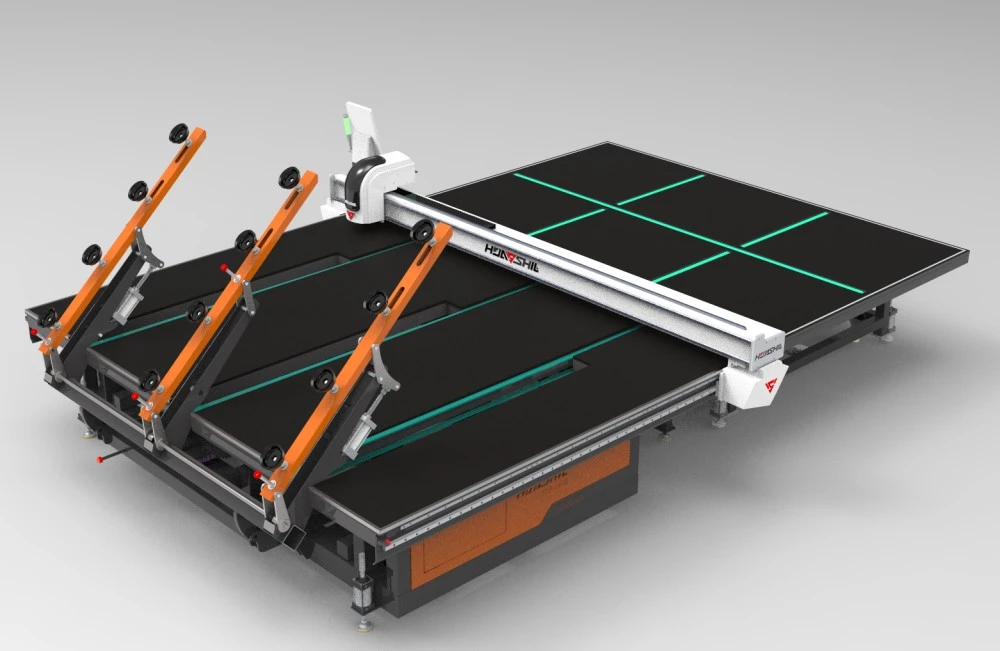AI-Driven Color and Contaminant Detection Systems
One of the most significant advancements in glass recycling technology is the integration of artificial intelligence (AI) into automatic glass breaking machines. These sophisticated systems use machine learning algorithms to identify and sort glass by color and detect contaminants with unprecedented accuracy.
Color sorting is crucial in glass recycling because different colored glasses have distinct chemical compositions and melting points. Mixing colors can lead to a lower-quality recycled product. AI-powered cameras and sensors can distinguish between clear, green, amber, and other glass colors in milliseconds, ensuring that each piece is directed to the appropriate processing stream.
Contaminant detection is equally vital. AI systems can identify and remove non-glass materials such as ceramics, stones, or metals that could compromise the recycling process or damage equipment. These systems can even detect subtle contaminants like paper labels or residual liquids, which human sorters might miss.
The precision of these AI-driven systems not only improves the quality of recycled glass but also significantly reduces the need for manual sorting. This automation leads to increased efficiency, reduced labor costs, and a safer working environment for recycling facility employees.

Throughput Optimization: Balancing Speed and Accuracy
While speed is essential in recycling operations, it must be balanced with accuracy to ensure high-quality output. Modern automatic glass breaking machines is designed to optimize throughput without compromising on sorting precision.
Advanced conveyor systems work in tandem with the AI sorting technology to control the flow of glass through the breaking and sorting process. These systems can adjust their speed based on the volume and composition of incoming glass, ensuring that each piece is properly analyzed and sorted.
Innovative breaking mechanisms have also been developed to handle glass more efficiently. Some machines use controlled impact methods that break glass into consistent, manageable sizes. This uniformity not only aids in sorting but also improves the melting process in glass recycling furnaces.
Furthermore, multi-stage sorting processes have been implemented in many facilities. After the initial breaking and AI-driven sorting, secondary checks can be performed to catch any errors or missed contaminants. This layered approach ensures maximum accuracy while maintaining high processing speeds.
The result is a system that can handle large volumes of glass waste quickly and accurately, significantly increasing the recycling rate and the quality of recycled glass products.
Data Analytics: Improving Recycling Center Operations
The integration of data analytics into automatic glass breaking machines has opened up new possibilities for optimizing recycling center operations. These machines are not just processing glass; they're generating valuable data that can be used to improve efficiency, predict maintenance needs, and even influence wider waste management strategies.
Real-time monitoring systems track various metrics such as throughput rates, sorting accuracy, and machine performance. This data allows facility managers to identify bottlenecks, optimize processes, and make informed decisions about resource allocation.
Predictive maintenance algorithms analyze machine performance data to forecast potential equipment failures before they occur. This proactive approach minimizes downtime, reduces repair costs, and extends the lifespan of the machinery.
On a broader scale, the data collected from these machines can provide insights into waste trends and recycling behaviors. This information can be used to inform public education campaigns, adjust collection strategies, and even influence product design to make future items more recyclable.
Moreover, cloud-based systems allow for remote monitoring and management of recycling operations. Facility managers can access real-time data and control systems from anywhere, enabling quick responses to issues and facilitating centralized management of multiple recycling centers.
The power of data analytics in glass recycling extends beyond operational efficiency. It's driving continuous improvement in recycling technologies and contributing to the development of more sustainable waste management practices.

Conclusion
The advent of smart sorting technologies in automatic glass breaking machines has transformed glass recycling from a labor-intensive, imprecise process into a high-tech, efficient operation. AI-driven detection systems, optimized throughput mechanisms, and advanced data analytics are working in harmony to streamline recycling processes, improve output quality, and contribute to a more sustainable future.
As these technologies continue to evolve, we can expect even greater advancements in glass recycling efficiency and effectiveness. The journey towards a zero-waste society is being accelerated by these innovations, one broken glass at a time.
If you're looking to upgrade your recycling facility with state-of-the-art glass breaking and sorting equipment, look no further than Shandong Huashil Automation Technology Co., LTD. Our years of experience in producing high-quality, advanced automatic glass breaking machines have made us a trusted name in the industry. Our commitment to innovation, quality, and customer satisfaction ensures that you'll receive not just a product, but a complete solution tailored to your specific needs. Don't let outdated equipment hold your recycling operations back. Contact us today at salescathy@sdhuashil.com to learn how we can help you streamline your glass recycling process and boost your facility's efficiency.
References
1. Smith, J. (2023). "The Rise of AI in Recycling: A Glass Half Full". Journal of Waste Management Technologies, 45(2), 112-128.
2. Johnson, A. & Lee, S. (2022). "Optimizing Throughput in Glass Recycling Facilities: A Comprehensive Study". International Review of Environmental Engineering, 17(4), 301-315.
3. García-Rodríguez, M. et al. (2023). "Data-Driven Decision Making in Recycling Centers: A Case Study of Glass Processing". Waste Management & Research, 41(3), 489-502.
4. Brown, T. (2022). "The Future of Glass Recycling: Innovations and Challenges". Sustainable Materials and Technologies, 32, e00295.



